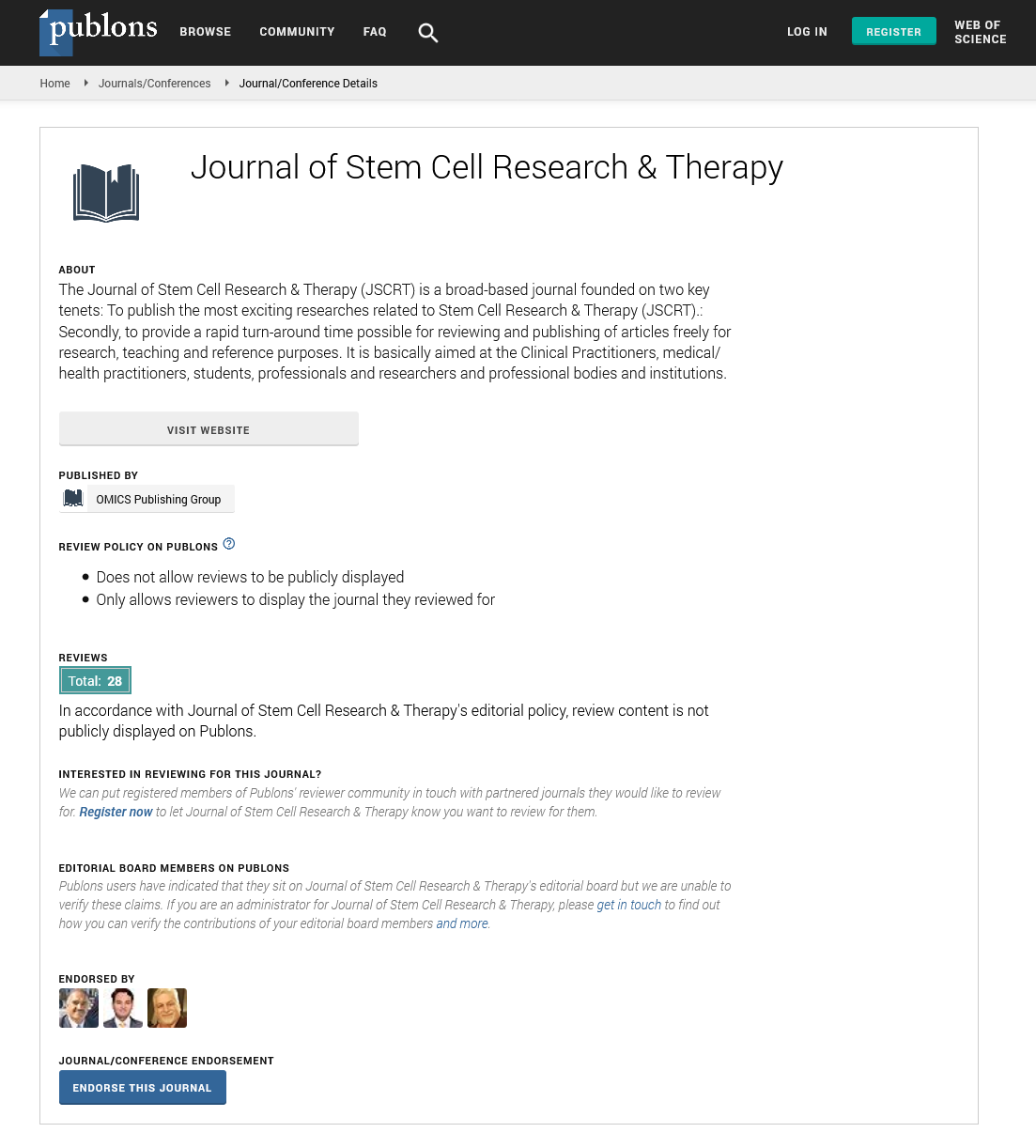Indexed In
- Open J Gate
- Genamics JournalSeek
- Academic Keys
- JournalTOCs
- China National Knowledge Infrastructure (CNKI)
- Ulrich's Periodicals Directory
- RefSeek
- Hamdard University
- EBSCO A-Z
- Directory of Abstract Indexing for Journals
- OCLC- WorldCat
- Publons
- Geneva Foundation for Medical Education and Research
- Euro Pub
- Google Scholar
Useful Links
Share This Page
Journal Flyer

Open Access Journals
- Agri and Aquaculture
- Biochemistry
- Bioinformatics & Systems Biology
- Business & Management
- Chemistry
- Clinical Sciences
- Engineering
- Food & Nutrition
- General Science
- Genetics & Molecular Biology
- Immunology & Microbiology
- Medical Sciences
- Neuroscience & Psychology
- Nursing & Health Care
- Pharmaceutical Sciences
Abstract
Very Small Embryonic-Like Stem Cells Survive and Restore Spermatogenesis after Busulphan Treatment in Mouse Testis
Sandhya Anand, Deepa Bhartiya, Kalpana Sriraman, Hiren Patel and Manjramkar DD
Study Objectives: Adult mammalian testes harbor a novel population of quiescent, pluripotent, very small embryonic-like stem cells (VSELs) along with spermatogonial stem cells (SSCs). Present study was undertaken to (i) characterize testicular VSELs (ii) investigate differential effect of chemotherapy on VSELs and SSCs and (iii) to restore the differentiation ability of surviving VSELs by providing healthy somatic microenvironment.
Methods: Effect of busulphan (25 mg/Kg) was studied on mouse testes. Syngenic Sertoli cells(105 cells per testis) and bone marrow derived mesenchymal cells (104 cells per testis) were transplanted separately through intertubular route. Effect of niche reconstruction was studied two months later by histology and immuno-localization of germ cell markers MVH and PCNA. Caudal sperm were evaluated for their ability to fertilize oocytes in vitro.
Results: VSELs were 2-6 μm in size, SCA-1+/CD45-/LIN-, had high nucleo-cytoplasmic ratio and comprised 0.03% of testicular cells whereas SSC specific marker GFRa localized on a distinct, larger cell population. Busulphan selectively destroyed SSCs and other germ cells however, nuclear OCT-4A, Nanog, Sox-2 and SCA-1 positive VSELs (0.06%) survived. Persisting VSELs were unable to differentiate possibly because chemotherapy also affected the ‘niche’ comprising Sertoli cells. Complete restoration of spermatogenesis was observed two months post transplantation of Sertoli and mesenchymal cells. Transplanted cells formed neo-tubules in the vicinity of surviving tubules and were possibly a source of growth factors essential for VSELs proliferation and differentiation. Both MVH and PCNA showed increased staining in the transplanted group. qRT-PCR studies revealed existence of a meiotic block in busulphan treated testis which was overcome after transplantation. Resulting sperm progressed to epididymis, showed normal motility and ability to fertilize in vitro.
Conclusion: Results show that VSELs survive chemotherapy and can restore spermatogenesis in germ cells depleted mice. Results have direct relevance to address fertility issues of cancer survivors.

